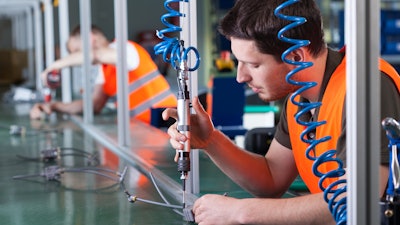
The COVID-19 crisis is redefining business agility across all functions of the enterprise. Just look at the manufacturers normally accustomed to making car batteries who quickly pivoted to producing ventilators. Disruption associated with the pandemic has led to highly variable fluctuations in demand for skilled workers, with manufacturing among the most affected sectors.
Struggling to find qualified talent amid fast-changing market conditions, business leaders are turning increasingly to an often-overlooked source – the external workforce, made up of contingent and temporary workers, independent contractors, consultants, and freelancers.
Of course, this isn’t the first time we’ve seen this trend. In the recovery following the financial crisis of 2007-2009, the hiring of freelance and contract workers soared as companies sought out flexibility. Then as now, contingent labor and services providers have helped the manufacturing sector to regain its competitive footing and take steps toward recovery.
In the early stages of the pandemic, many manufacturing workers were laid off or furloughed. More recently, they have faced additional financial struggle as certain relief benefits lapse. These laborers now must be nimble and creative with their skills to secure new opportunities. In fact, in a survey of 1,000 consumers conducted by SAP, 36 percent said they are likely to consider freelance work if unemployed.
What’s more, 69 percent said they’d be open to contract or freelance work in an area different from their past work experience, as long as it aligns with core skill sets (21 percent), has opportunity for growth (20 percent) or is interesting to them (28 percent).
Contingent labor and services providers fill gaps where they are desperately needed. A digital marketplace for external talent can help fill shifting demand by matching open positions to workers with transferable skills from other industries. By tapping into vetted talent pools to which organizations might otherwise lack access, this approach equips manufacturers with the visibility they need to maintain business continuity and achieve resiliency.
Diversification and Resiliency
The pandemic has demonstrated the need for more diversified supply chains and pools of skilled talent. Incorporating external workers means tapping into a wider range of talent from various industries and locales – broadening the sourcing mix and the range of cross-industry knowledge and skill sets. Workers in the industrial manufacturing, construction and warehouse industries tend to have crossover skills that make them extremely valuable to fill labor gaps. Enabling these workers to plug into industries as independent contractors helps bridge the gap and moves manufacturers toward a more flexible future.
However, only 46 percent of manufacturers have effectively integrated their external workforce into the broader organization, according to a study from SAP and Oxford Economics. It’s a disconnect that manufacturers can scarcely afford to overlook.
The workforce remains any manufacturer’s most invaluable asset, but it’s safe to say that one size no longer fits all. Technology plays a vital role in shaping the success of an external workforce and measuring its outcomes. What businesses must consider is whether their workforce management solutions provide the visibility and insights necessary to realize the greatest value from their total workforce, irrespective of individual worker classification.
At the same time, recovery is likely to arrive soonest for the manufacturers that can easily find and manage external workers whose high-value skills complement those of traditional employees and contribute to creating lasting value for customers.
As organizations pursue resiliency, they should consider: Where are there opportunities to engage the external workforce further? How can doing so better prepare us to weather future variations in supply and demand? Can integrating contingent workers and services providers into our operations help us to compete better in all types of economic conditions?
Whether the macroeconomy is booming, bust or somewhere in-between, all businesses have the same goal: They want to run at their best. They want to be resilient, deliver on customer promises, run efficiently, adapt to challenges and manage spend thoughtfully. Embracing the external workforce, along with the digital tools to manage it effectively, can help organizations meet all these challenges and emerge from the pandemic stronger than ever.
Arun Srinivasan is the General Manager of SAP Fieldglass.






















